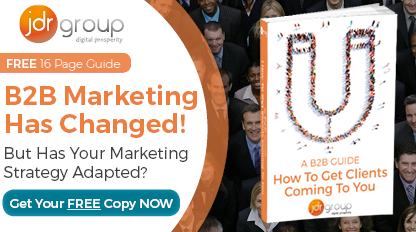The PRIMO-F Business Model And The Marketing Problem In Most Small Businesses

The PRIMO-F Business Model, also known as the FiMO/RECoIL Model, is an enhanced form of SWOT analysis that was developed by Durham University Business School around 2010. The model is an acronym of:
People, Resources, Innovation & Ideas, Marketing, Operations, & Finance
PRIMO-F is a valuable strategic tool that allows a detailed analysis of business performance in three key areas, and the mapping out of future growth potential. In this article we explain what the PRIMO-F model is, how it is used, and what it reveals about the priorities of most SMEs.
The PRIMO-F Business Growth Model
The principle underlying PRIMO-F is: for a business to grow, it must be organised for effective growth. This organisational capacity is linked to two performance criteria; how your business is currently performing, and how your infrastructure equips you for future expansion. A verdict is achieved by using the following formula:
Organisational growth effectiveness = current performance (FiMO) X future potential (RECoIL)
For this formula to make sense, we should look at how PRIMO-F analyses current and future potential. These are linked to the resources and processes indicated in the model’s title.
Current Performance (& Performance To Date)
Finance | Marketing | Operations
Current performance and performance to date is assessed by looking at three major parts of the business: finance, marketing and operations. Operations includes the nuts and bolts of providing a service, Finance incorporates all accounting, including sales support, payroll etc, and marketing covers both marketing and sales functions. Each aspect is examined using SWOT analysis or another form of business improvement review.
Future Potential
People | Resources | Innovation & Ideas
The future potential of a business is trickier to determine, which is why the model looks at four different processes and resources. Under the heading ‘people’, the model assesses the experience and capacity of the staff working at the company. This includes the experience of managers in managing growth and developing services, plus their level of leadership, staff morale, general experience, qualification level etc.
Resources include tangible items such as cash reserves and physical assets, and also less tangible qualities, such as the desirability of the products and services, strategic location and so on. Also covered under this heading are business processes, including IT infrastructure, planning procedures and data control. Innovation & ideas express the willingness of a business to embrace new opportunities, their responsiveness to changing market conditions and their ability to diversify their services over time.
PRIMO-F rates a business for each of these factors on a scale of 1 to 10, identifying positive and negative factors, and ranking each in terms of development priority.
Creating A Business Model For Success
Future potential is a mixed bag for most businesses, although most have room for some improvement. In terms of current position, most SMEs find that they score the strongest on the operational and financial side, while falling short on marketing. This means they automatically start at a lower starting position when calculating growth expectations.
What makes marketing such a weak point? The biggest problem most small businesses have with marketing is resources. With the best will in the world, there simply isn’t the time and staff available to devote to marketing. After a while, many SMEs slip into a hit and miss approach to marketing, with a few hours being spent here and there as time allows. While this is perfectly understandable, it isn’t the path to marketing success. For this you need a bespoke strategy that syncs the needs of your market with the capacities of your business – and provides the resources to carry it through.
A business growth agency like JDR is a great asset for creating and implementing a successful business growth model. Achieving successful marketing is more affordable than you may think, so please get in touch with one of our advisers today to discuss our flexible business growth plans.



